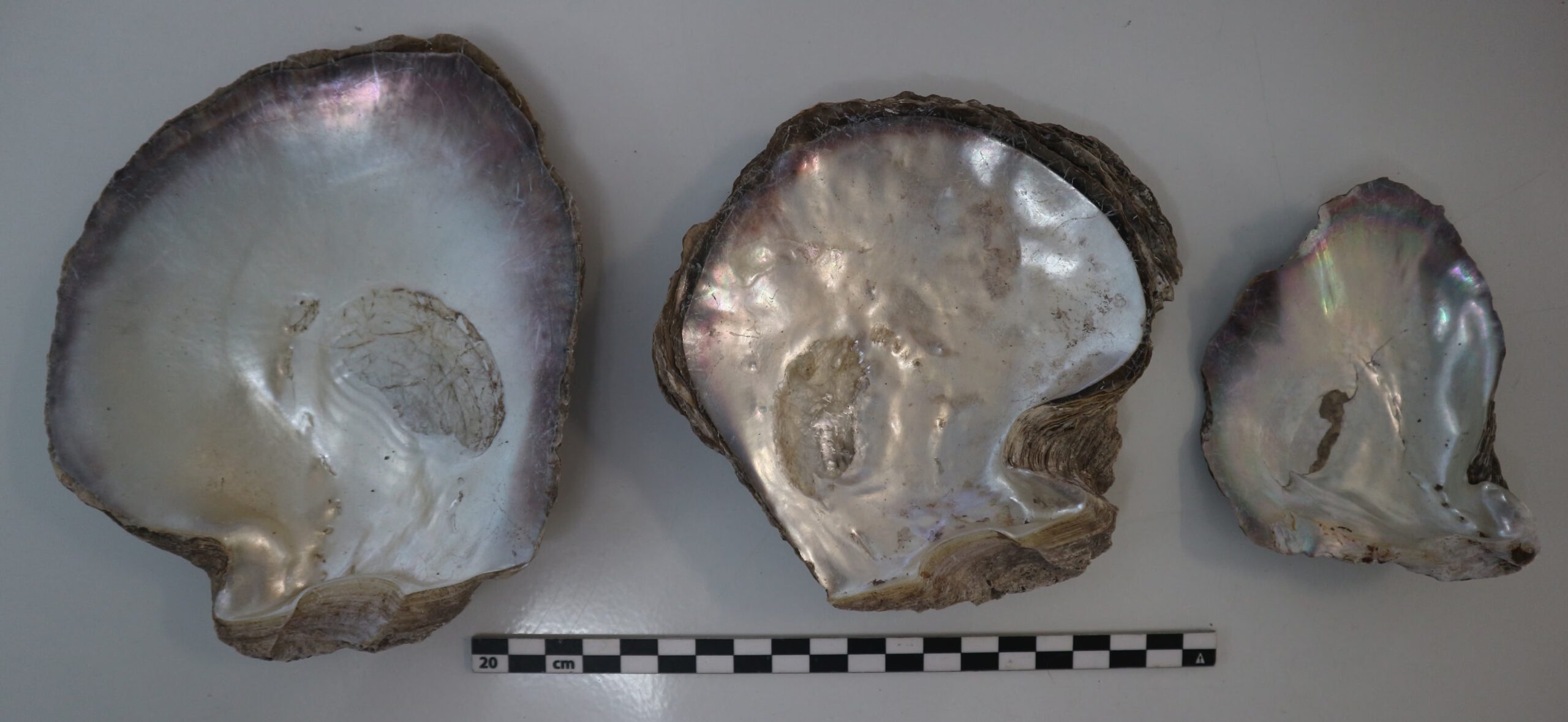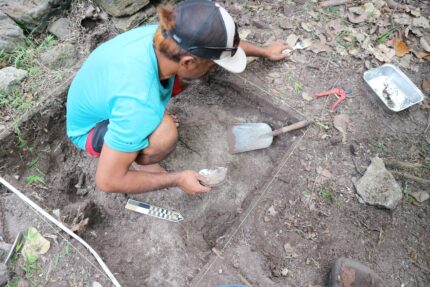An archaeological team from the University of Sydney has discovered pearl shells connected to the French colonization of Polynesia in the 19th century. The three complete pearl shells were found under an iron axe head at the site of missionary school on Aukena, one of the Îles Gambier of French Polynesia. The intact shells are evidence of how the missionaries trained schoolboys to process saltwater oysters for export.
In collaboration with members of the local cultural association Te Ana Pouga Magareva, the team excavated priests houses and a boy’s school associated with missionary churches on the islands of Aukena and Akamaru. At six different sites excavated in October and November 2023, the team unearthed more than 1,500 objects from daily use items — plates, bowls — to consumables — medications, alcohol — and remains from meals of fish, bird and shellfish.
The richest trove of finds came from the priests’ house at the Church of Notre Dame de la Païx at Akamaru. Hundreds of fragments of glass were recovered at the site, equating to dozens of bottles of gin, champagne and wine, as well as perfume and medicine imported from France, Britain, and the Netherlands.
Another distinctive find was hundreds of complete and fragmented pearl shells (from the Pinctada genus), which were cultivated to be worked into objects like buttons and decorative inlay, offering a glimpse into the island’s former pearl shell industry. […]
Traditionally, in French Polynesia, pearl shells were used for fishing lures, tattooing needles, pendants and figurines. By the 1840s, they were harvested en masse and exported around the world. The missionary endeavour in Mangareva was supported by Polynesian people cultivating and preparing thousands of tonnes of the valuable shells.
The iron axe and oyster shells found at the boys’ school on Aukena indicate the children in the school were being trained not just to make saleable finished pearl shell goods for export, but to farm the oysters, raise them to useable size, harvest and process them.
Excavations at Akamaru, Aukena and Mangareva will continue next year.
* This article was originally published here








No comments:
Post a Comment